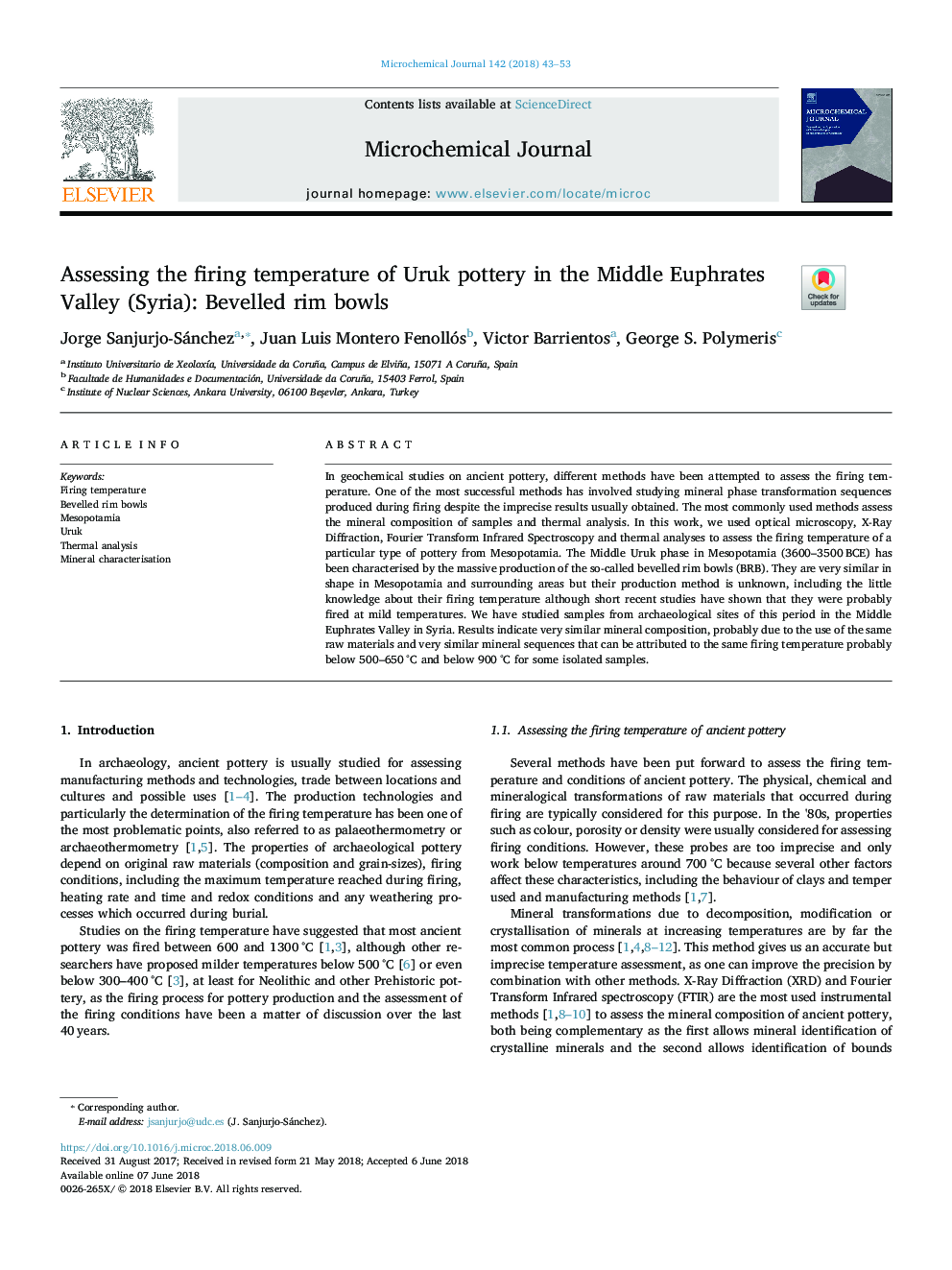| Article ID | Journal | Published Year | Pages | File Type |
|---|---|---|---|---|
| 7639921 | Microchemical Journal | 2018 | 11 Pages |
Abstract
In geochemical studies on ancient pottery, different methods have been attempted to assess the firing temperature. One of the most successful methods has involved studying mineral phase transformation sequences produced during firing despite the imprecise results usually obtained. The most commonly used methods assess the mineral composition of samples and thermal analysis. In this work, we used optical microscopy, X-Ray Diffraction, Fourier Transform Infrared Spectroscopy and thermal analyses to assess the firing temperature of a particular type of pottery from Mesopotamia. The Middle Uruk phase in Mesopotamia (3600-3500â¯BCE) has been characterised by the massive production of the so-called bevelled rim bowls (BRB). They are very similar in shape in Mesopotamia and surrounding areas but their production method is unknown, including the little knowledge about their firing temperature although short recent studies have shown that they were probably fired at mild temperatures. We have studied samples from archaeological sites of this period in the Middle Euphrates Valley in Syria. Results indicate very similar mineral composition, probably due to the use of the same raw materials and very similar mineral sequences that can be attributed to the same firing temperature probably below 500-650â¯Â°C and below 900â¯Â°C for some isolated samples.
Related Topics
Physical Sciences and Engineering
Chemistry
Analytical Chemistry
Authors
Jorge Sanjurjo-Sánchez, Juan Luis Montero Fenollós, Victor Barrientos, George S. Polymeris,
